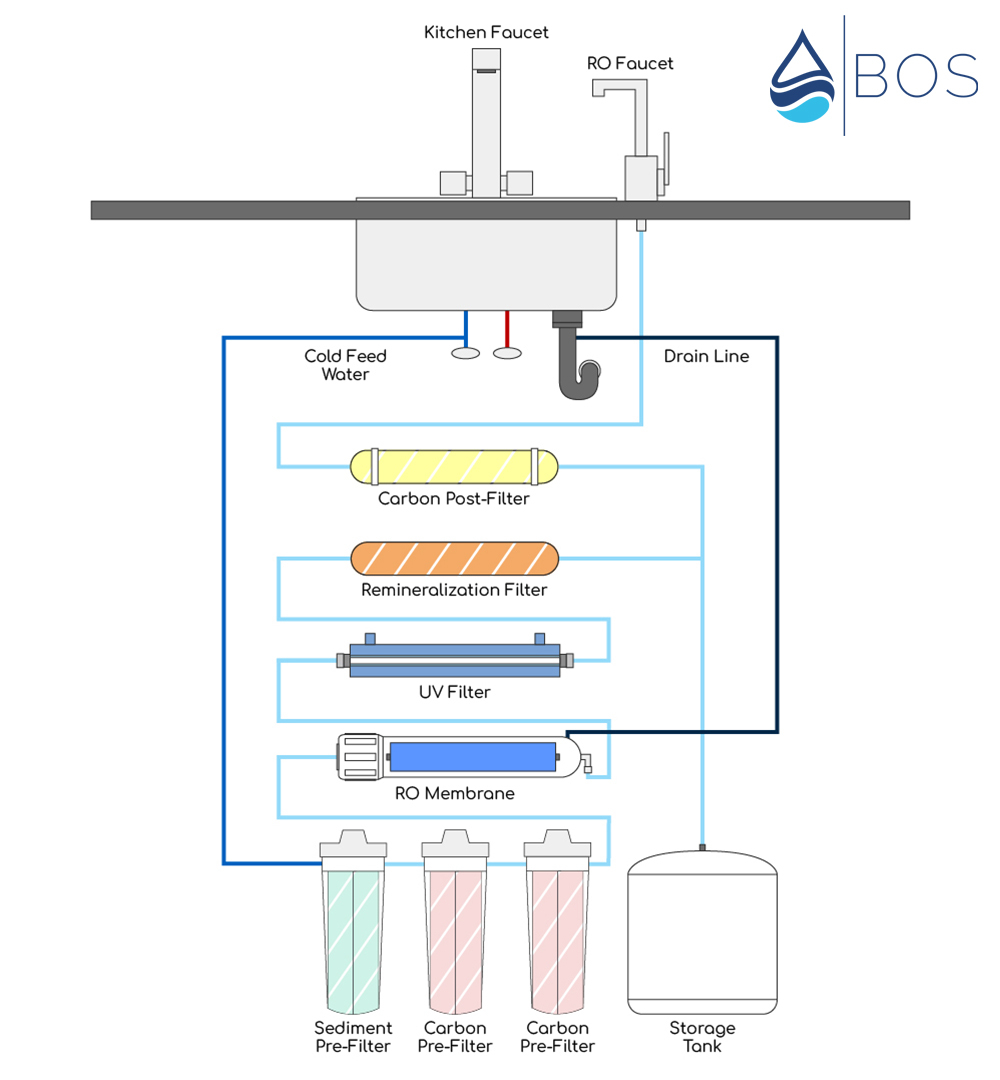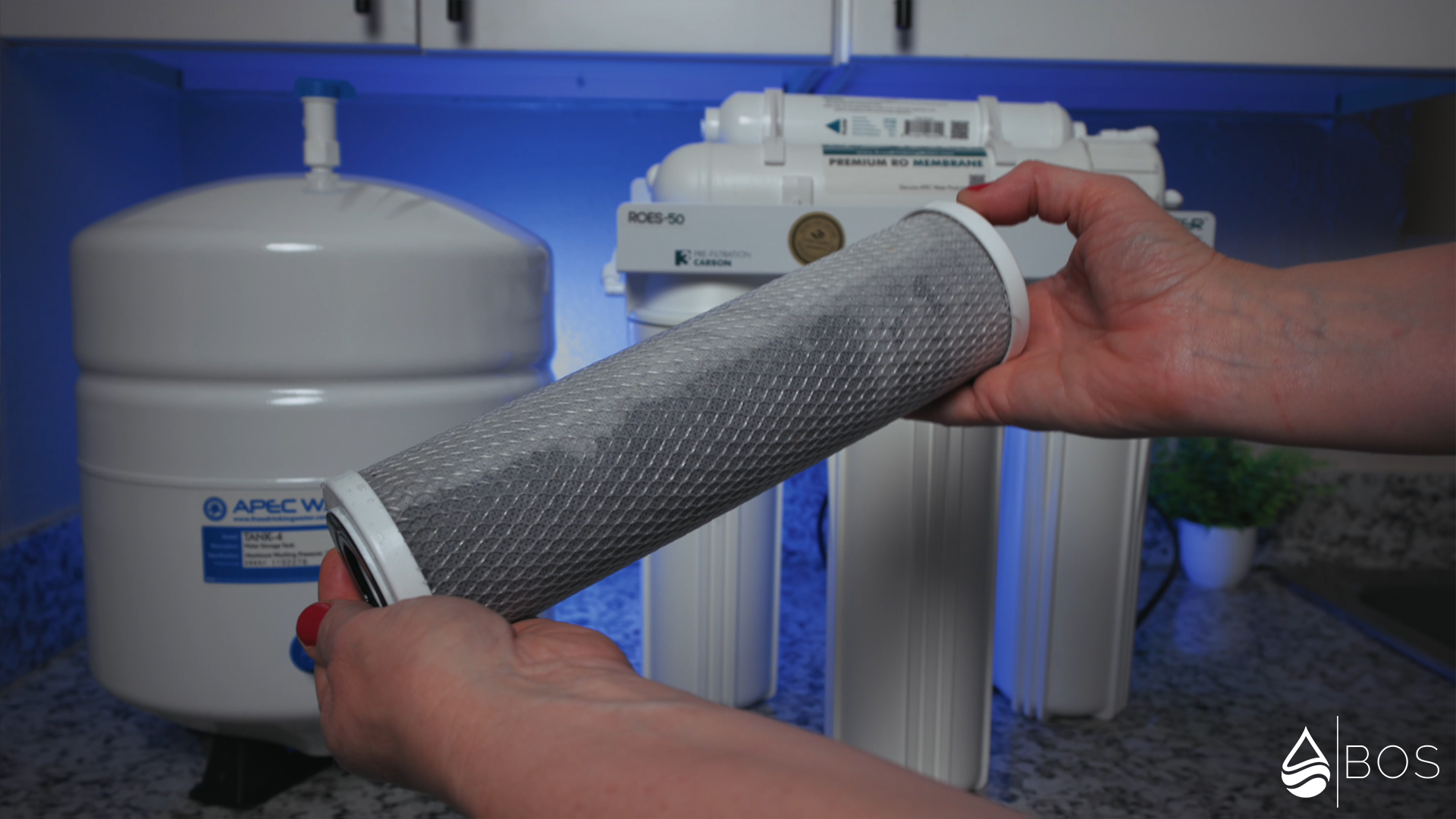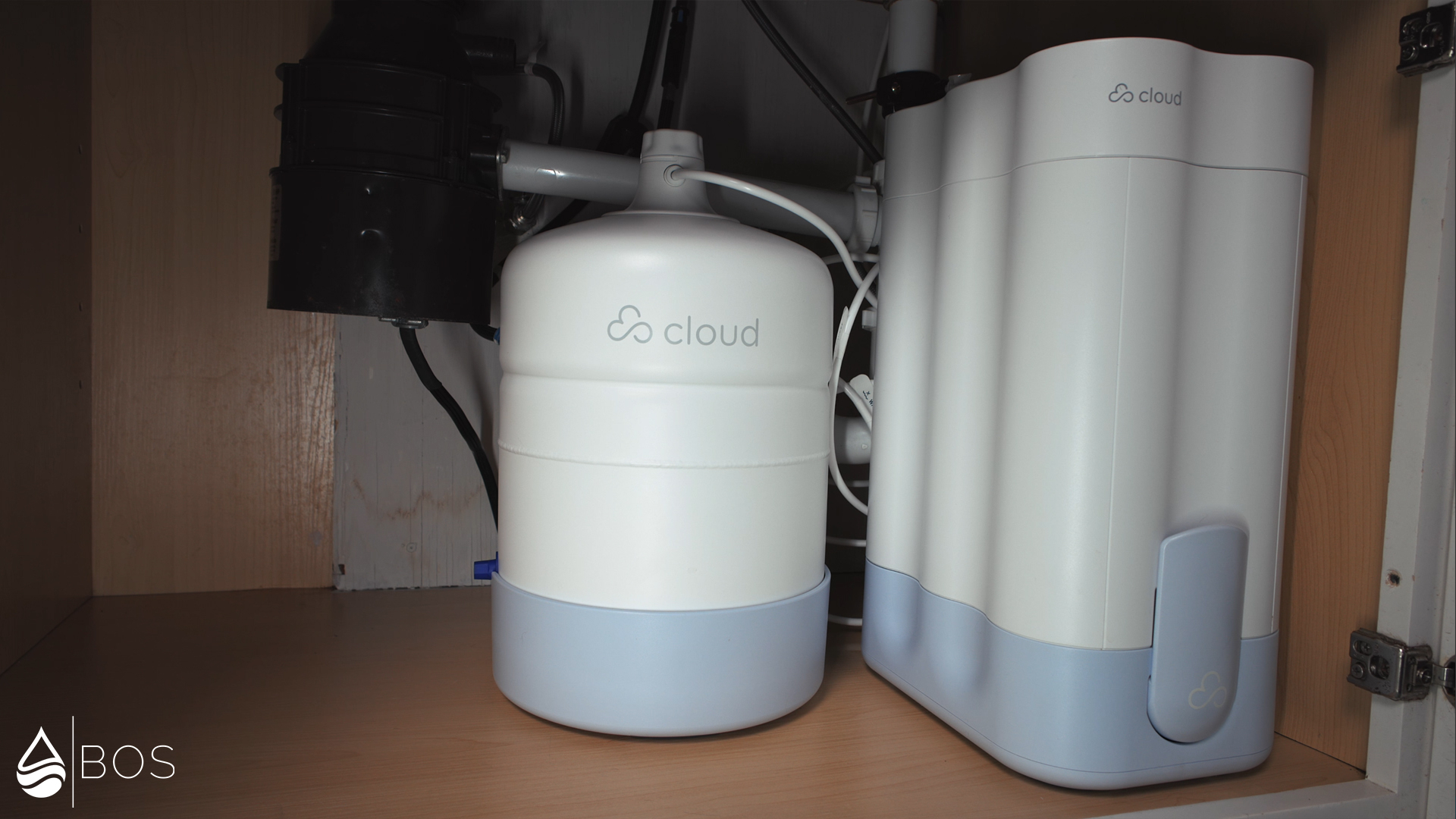What does a 7-stage reverse osmosis system look like? Find out using our helpful diagram!
Contents
7-Stage Reverse Osmosis System Diagram
Here is our 7-stage reverse osmosis system diagram. It shows an under sink RO water filter with one sediment pre-filter stage, two carbon pre-filters (one granular and one carbon block), the reverse osmosis membrane, a carbon post-filter, a UV purifier, a remineralization filter, a water storage tank, and the RO faucet.

How Does a 7-Stage Reverse Osmosis System Work?
The above diagram illustrates the complete process of water filtration in a 7-stage reverse osmosis system, starting from the feed water supply valve and ending with the RO faucet.
7-stage RO systems come in various configurations, typically including one sediment pre-filter, 2x carbon pre-filters, one reverse osmosis membrane, and one carbon post-filter. And then they might have UV + remineralization or any other type of “special” filter, but this is not standardized.
7-Stage Reverse Osmosis System Components
Stages of Filtration
A standard RO system comprises 3 foundational filter stages: Carbon pre-filtration, reverse osmosis, and post-carbon filtration. 7-stage systems often incorporate extra pre-filtration and “special” filters that can be set up in various configurations.
Sediment Pre
Typically positioned as the initial stage, sediment pre-filters capture larger particles like dust, dirt, rust, and others. Consider it a supportive aid that guarantees optimal filtration of smaller particles and prevents potential blockages in the reverse osmosis membrane.
Carbon Pre
During this filtration stage, water passes through carbon media to eliminate undesirable flavors, odors, cloudiness, colors, and chemicals like volatile organic compounds (VOCs), chlorine, and sometimes chloramines. The primary purpose is to protect the RO membrane from potential chlorine-induced harm while also improving the water’s taste.

RO Membrane
In this crucial phase, water is pushed through a semipermeable membrane featuring pores as small as 0.0001 microns. It filters out up to 99% of impurities.
Carbon Post
After going through the process of reverse osmosis, water is stored in a tank for future use. By adding a coconut shell carbon post-filter, any lingering taste that may have transferred into the water during storage is eliminated.
Special Filters
Some special filters you may come across include:
- Remineralization filter: This adds beneficial minerals like calcium and magnesium to improve the taste of the water before it is dispensed through the RO faucet.
- UV purification filter: If your water is contaminated with bacteria, viruses, or protozoa, this filter uses UV light to disrupt their DNA, preventing replication and the spread of disease.
- Iron filters: If your water contains iron, it is recommended to treat the issue at the point of entry or consider using an iron filter stage as part of your RO system. While reverse osmosis can remove iron from drinking water, concentrations above 0.3 ppm may foul sediment and carbon filters and block the RO membrane.
The Other Components
Naturally, your reverse osmosis system will include a variety of components beyond the filtration stages, specifically:
Module
A central hub that links all system components.
Water Tank
Filtered water is stored in this reservoir until required.

RO Faucet
The faucet offers convenient access to the filtered RO water.
Drain Line and Saddle
This ensures the removal of all wastewater produced by the reverse osmosis system.
Water Inlet
This is where the water supply enters the RO system.
Automatic Shut-Off Valve
The system’s operation is halted by this valve once the storage tank reaches its maximum capacity.
Check Valve
This valve serves to safeguard the RO membrane against any possible water backflow from the storage tank or drain line.
Flow Restrictor
The flow restrictor controls the water pressure, guaranteeing that the RO system maintains adequate pressure for water to pass through the membrane.
Tubing
Tubing is utilized in various sections of the system to establish connections among its components.
Fittings
Fittings are where the tubing connects to.
Further Reading
About the Author(s)

